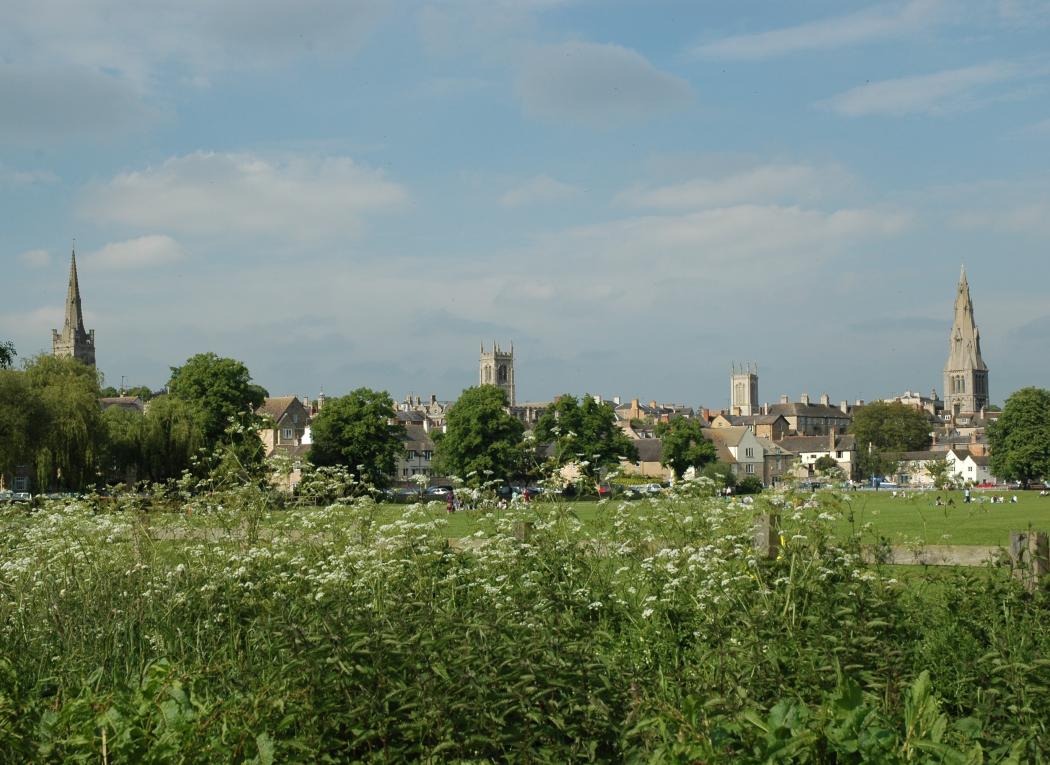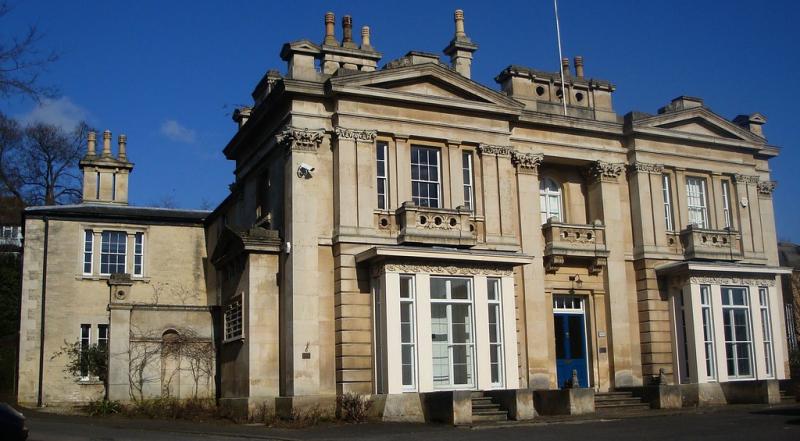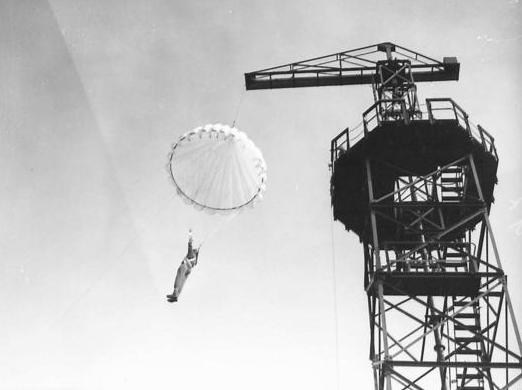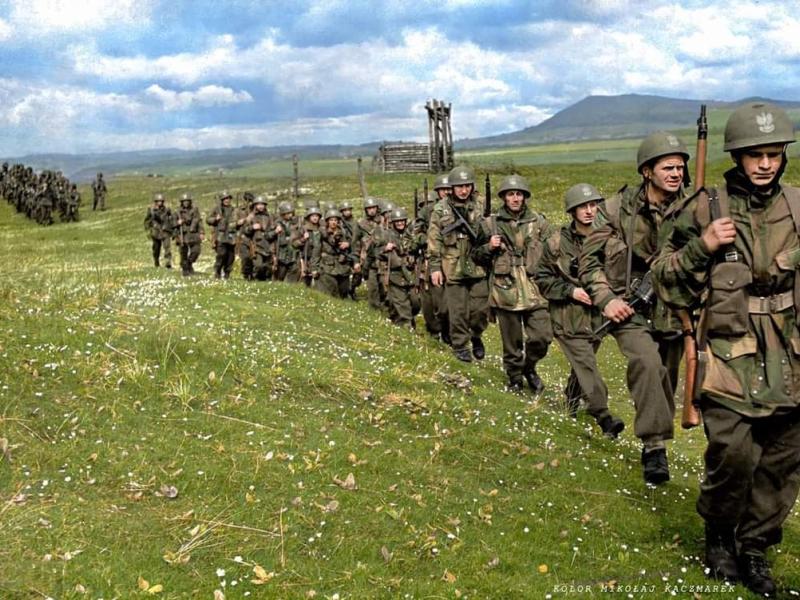Polish forces called Stamford home

In the build up to Operation MARKET GARDEN, men of the Polish 1st Independent Parachute Brigade were stationed in the Stamford area.
They had arrived in Lincolnshire from Scotland after often tortuous escape routes via Hungary or Romania or the Balkan states - fleeing from the twin threats of German and Soviet occupation to write another memorable chapter in the fight to free their country.
Stamford, with its 17th and 18th-century stone buildings, timber-framed buildings and medieval parish churches, became their temporary home.

Rock House was the Brigade Headquarters, under the command of Major General Stanislaw Sosabowski.
Stamford School played a pivotal role, providing facilities for training and accommodation. Clapton House, now part of the school, became the base for the Brigade’s Parachute Field Ambulance (medical company). Troops utilised various buildings including on Maiden Lane and the Drill Hall for exercises and accommodation.
School facilities were adapted to meet their needs and interactions between soldiers and students created lasting memories. Polish soldiers participated in local events further strengthening ties between the Brigade and the Stamford community.
The Polish Brigade’s brass band could often be seen and heard marching up and down the high streets or giving concerts, making unforgettable memories.

September 1941: a trainee Polish paratrooper descends from a parachute tower at Lundin Links, next to Lundin Tower in Fife. At this time, Polish paratroops were based a few miles away at Largo House. (IWM H 14158)
How the Brigade Evolved
Many of those who fled to France joined the French forces and fought alongside them until France collapsed. Then they came to Britain, initially gathering around the Scottish capital, Edinburgh.
Sosabowski had been the Deputy Commander of the 4th Polish Infantry Division in France at the time of his evacuation to Britain in June 1940. In October 1940, he was given command of the 4th Polish Rifle Brigade, based in Scotland, and charged with coastal defence.
Some of Sosabowski’s men volunteered for commando and parachute training in preparation for returning to Poland to help the underground army. On their return from parachute training, the volunteers’ enthusiasm for it was infectious, spreading to Sosabowski himself, who decided to form a Polish Parachute Brigade that could eventually be dropped direct into Poland.
Sosabowski began unofficially organizing and training his men as paratroops. Unlike the British, he did not give them the choice of volunteering but decided that everyone fit enough would become a paratrooper.
Initial training took place in Scotland, with live jump training at the RAF’s parachute training school at Ringway (now Manchester airport). In July 1944, the Brigade was attached to the British 1st Airborne Division, and it moved to the English East Midlands, with its Headquarters in Stamford.
The Brigade flew to Arnhem from Saltby and Spanhoe airfields on 21 September.
Poor weather had delayed their departure, with disastrous consequences. German forces were by now on the alert and many Poles were killed as they dropped. Despite the Poles’ vigorous efforts, their contribution was too late to alter the course of the battle.
Cornflakes for the Toes
In the summer of 1944, a Stamford resident recalls being 11 years old and not yet at Stamford school while his brother was already a student there. He bumped into a soldier called Tadeusz Kaczmarczyk.
One day Tadeusz asked if he could buy him some cornflakes. He told him they hadn't eaten cornflakes since before the war and only wheat flakes were available. No, came the reply, I want cornflakes to put on my toes.
From that he deduced he really meant corn plasters, so he ran round the corner to Timothy Whites and Taylors chemist shop in the High Street and bought some!
Polish memorial on Spring Close in Easton on the Hill
Stamford Memorials
In September 1944, Stamford residents woke one morning to find that all the Polish soldiers had left the town and there was an eerie silence. The next thing they heard was that troops had flown to Arnhem.
Their legacy is preserved through memorials and commemorative events. The Polish War Memorial at Stamford School is a focal point for Remembrance ceremonies. A plaque dedicated to the Polish Medical Company is attached to Clapton House.
A permanent memorial at Easton on the Hill pays tribute to Polish forces stationed in the Stamford area and those lost in a tragic mid-air collision near Stamford.
The Brigade's Canine Mascot
In 1943, Polish medical officer Captain Mozdziwerz was visiting London when he found and rescued a Scottish sheepdog from the ruins of a bombed house. He brought the dog back to Stamford, and the Polish troops named him Smokey. Smokey became the mascot of the Brigade, sharing the life of the troops and even taking part in training flights and jumps, wearing his own tiny parachute. He stood to attention next to Captain Mozdziwerz and even marched past President Raczkiewicz.
When the Polish paratroopers departed on Operation MARKET GARDEN in September 1944, Smokey was left behind in Stamford. Stories suggest that Smokey’s instinct told him this was coming. He did not touch his food and howled, his tail tucked between his legs, as he watched the manoeuvring aeroplanes overhead. He died, it is suggested, of a broken heart and was buried in Clapton Garden with full military honours, while the military band played Chopin's Funeral March.
Time passed and the grave was forgotten and deteriorated. In 1996, Lieutenant Colonel George Wolf, then commander of Stamford School's Combined Cadet Force (CCF,) hatched a plan to have the memorial restored, rededicated and moved to a more prominent position in the garden. The re-dedication ceremony was planned to coincide with the annual CCF inspection.
Polish authorities gave their permission and blessing, and the surviving veterans of the Polish Brigade were invited. The Polish ambassador and his military attaché attended, and the event attracted widespread media coverage.
Polish graves at Newark Polish Cemetery
Aircraft Crash at Tinwell
The Poles experienced tragedy even as they trained for war. On 8 July 1944, as part of the Brigade’s training schedule, 369 paratroopers from the Brigade, on board 33 C-47 Skytrains of the US 315th Transport Carrier Group, flew from Spanhoe airfield to jump onto a drop zone at nearby RAF Wittering.
Tragically, two of the aircraft collided and then crashed in the meadows by the River Welland at Tinwell; there was only one survivor. In all, 26 Polish Paratroopers and 8 American aircrew died, and a memorial dedicated to them can be found in All Saints’ Church at Tinwell. The paratroopers are buried in the Commonwealth War Graves' section of Newark Cemetery.
For more information on the 1st Polish Independent Parachute Brigade, click here:
